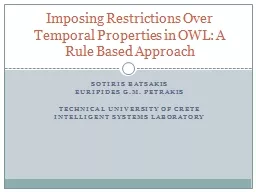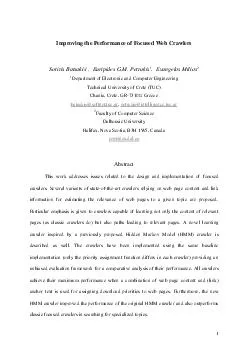PPT-Sotiris Batsakis
Author : marina-yarberry | Published Date : 2016-05-10
Euripides GM Petrakis Technical university of crete Intelligent systems laboratory Imposing Restrictions Over Temporal Properties in OWL A Rule Based Approach Introduction
Presentation Embed Code
Download Presentation
Download Presentation The PPT/PDF document "Sotiris Batsakis" is the property of its rightful owner. Permission is granted to download and print the materials on this website for personal, non-commercial use only, and to display it on your personal computer provided you do not modify the materials and that you retain all copyright notices contained in the materials. By downloading content from our website, you accept the terms of this agreement.
Sotiris Batsakis: Transcript
Download Rules Of Document
"Sotiris Batsakis"The content belongs to its owner. You may download and print it for personal use, without modification, and keep all copyright notices. By downloading, you agree to these terms.
Related Documents



